Have you ever wondered if a cannabis grow tent can solve your indoor growing challenges? This post explains what a cannabis grow tent is and shows its advantages for indoor growing. The content covers key benefits, setup guides, and common mistakes to avoid. Readers will learn how to improve their growing environment and gain tips to achieve better results.
Key Takeaways
- a grow tent creates a controlled space for reliable cannabis cultivation
- effective ventilation and filtration systems help minimize pest risks
- adjustable features allow precise management of plant stress and nutrients
- quality design supports efficient indoor setups for both beginners and experts
What Is a Cannabis Grow Tent?
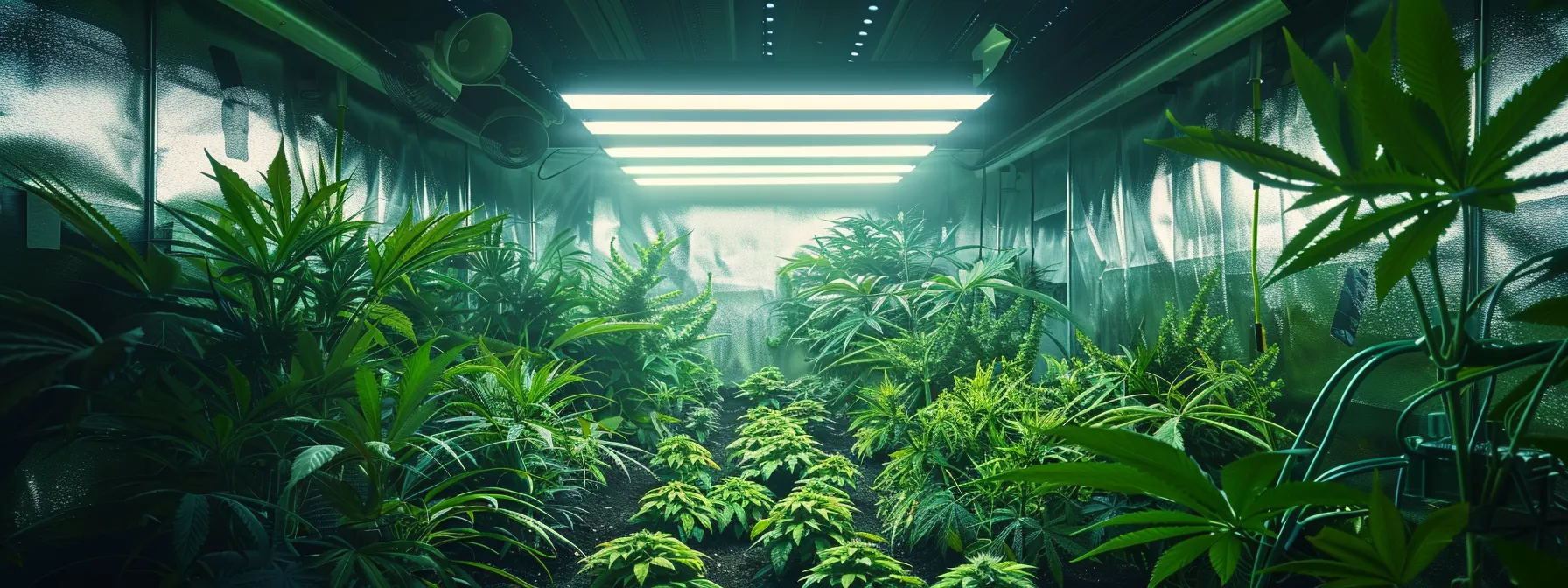
This section explains a cannabis grow tent's design and purpose, covering its structure, the role of stress controls and carbon filters, and how it reduces pest risks. It also describes various tent types and essential features such as calcium support for plant health, offering a clear guide for selecting an effective indoor growing setup.
Understanding the Structure and Function
The design of a cannabis grow tent focuses on creating a controlled environment that supports optimal plant growth while addressing concerns like proper light distribution and stress controls. The structure often includes reflective materials that enhance ultraviolet light exposure, and some growers experiment with integrating natural elements like basil and compost to support plant nutrition during indoor cultivation.
In a cannabis grow tent, features such as adjustable vents and filtration systems work together to minimize pest risks and maintain the ideal climate. The thoughtful layout lets growers fine-tune conditions, ensuring that each plant benefits from precise stress controls and balanced inputs that contribute effectively to plant nutrition, which has proven beneficial even in varied experiments.
Different Types of Grow Tents Available
Different types of grow tents available include designs built with modern technology to support plant care and optimize conditions. Some models use high-quality thread in their fabric construction, ensure proper fertilizer delivery, and allow precise sulfur adjustments for enhanced plant performance:
| Feature | Specification |
|---|---|
| Fabric Quality | Strong thread composition |
| Environmental Control | Integrated filters and vents |
| Nutrient Delivery | Optimized fertilizer and sulfur inputs |
Other variations in grow tents include models with modular panels and customizable setups that suit different cultivation needs. Each option is designed to facilitate a streamlined system for managing plant care while incorporating reliable technology and precise calibration for fertilizer and sulfur levels.
Key Features to Look for in a Grow Tent
A quality grow tent should offer a stable structure to accommodate various interior setups, whether placed in a basement or another dedicated space, with provisions for regulating temperature and humidity. Its design often facilitates an efficient system for managing essential supplies like potting soil and clay-based amendments, making it a sound investment for indoor cultivation enthusiasts.
Manufacturers typically incorporate adjustable components and reliable fixtures comparable to the precision of scissors to fine-tune plant care. Such features ensure that the grow tent supports optimal conditions, meeting the practical needs of growers while addressing common indoor growing challenges.
What Are the Advantages of Using Grow Tents?
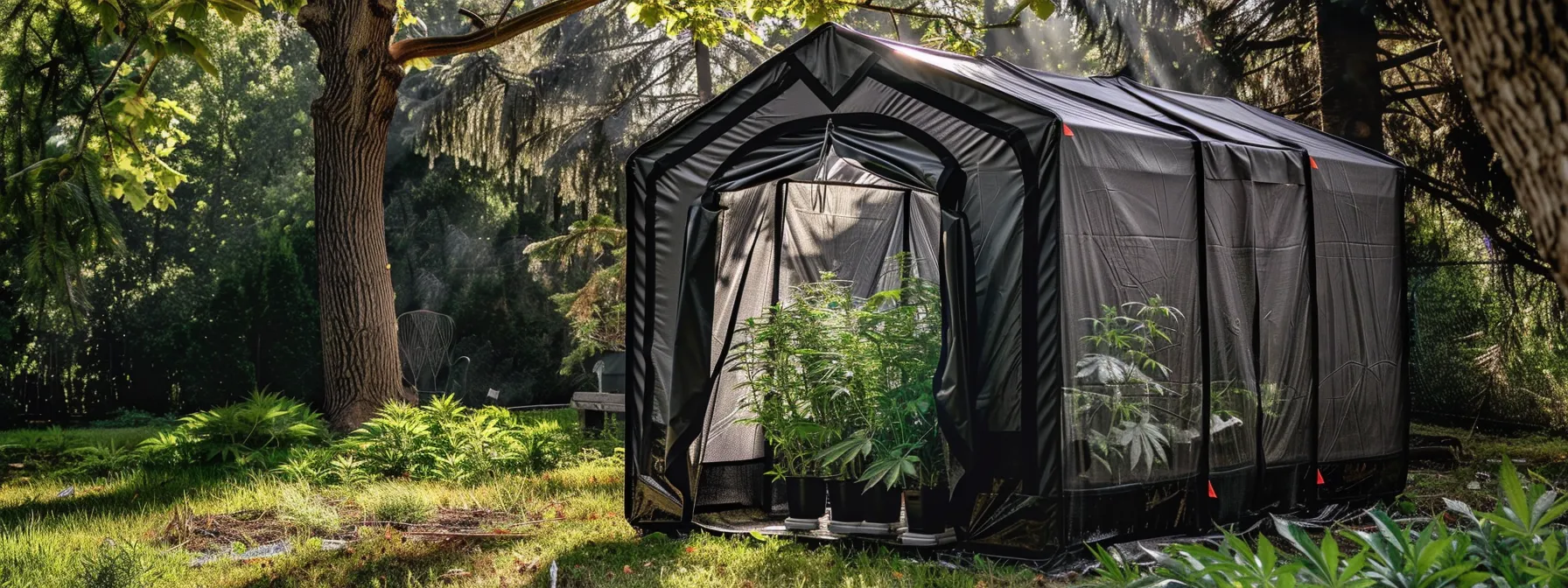
This section outlines key benefits such as improved control over environmental conditions, efficient use of indoor space, and reliable protection from pests and contaminants. It also covers techniques for year-round cultivation using hydroponics, analytics, hybrid systems, wind patterns, and optimal root setups for stable growth.
Enhanced Control Over Environmental Conditions
Professional growers utilize cannabis grow tents to maintain precise environmental conditions, ensuring technologies like airflow adjustments and air filter mechanisms work in unison. This approach to agriculture supports optimal bud development and nutrient delivery, much like preparing a balanced meal for the plants, resulting in reliable indoor cultivation outcomes:
- Controlled airflow distribution
- Adjustable air filter configurations
- Consistent temperature and humidity levels
Expert cultivators report that refined control over environmental parameters boosts overall plant performance. This systematic regulation, which includes attention to airflow patterns and precise adjustments to air filters, ultimately supports the growth of healthy buds and meets key challenges in indoor agriculture.
Maximizing Space for Indoor Growing
Indoor growers can convert limited areas, such as a closet, into efficient cultivation spaces by using grow tents designed for optimal space utilization. This setup meets strict cultivation policy requirements by integrating features like advanced ventilation and precise thermometer monitoring for consistent photosynthesis outcomes:
- Closet conversion for indoor cultivation
- Streamlined ventilation systems
- Reliable thermometer readings
Expert cultivators report that maximizing space improves plant care by offering a structured environment that supports the natural process of photosynthesis. This method allows for better control over climate conditions and encourages healthy growth while adhering to practical indoor growing policies.
Protecting Plants From Pests and Contaminants
Grow tents offer a controlled atmosphere that mitigates risks such as mold and contaminant build-up, ensuring that plants remain free from harmful pathogens. Integrating metal fixtures and precision filtration systems, these structures help maintain balanced nitrogen levels and protect delicate trichomes through proper pruning techniques that support overall plant health.
Indoor cultivation setups using grow tents provide robust protection against pests and contaminants by sealing out external elements while promoting a sanitized environment. This setup allows cultivators to manage stress factors effectively, ensuring that careful pruning and consistent nitrogen management preserve trichome integrity and prevent mold outbreaks.
Facilitating Year-Round Cultivation
Grow tents allow for continuous cultivation regardless of seasonal changes by maintaining a steady atmosphere where factors like fan circulation and oxygen levels are carefully managed. This consistent setup helps prevent infestation issues while ensuring that the canopy receives sustained light and proper nutrient flow:
| Feature | Benefit |
|---|---|
| Fan | Improves air circulation and oxygen distribution |
| Canopy | Provides a consistent light environment |
| Infestation Control | Reduces pest presence through a sealed environment |
| Compare | Offers a favorable alternative to outdoor growing challenges |
Cultivators can reliably maintain optimal growing conditions within these controlled environments while managing essential elements like fan speeds and oxygen concentration. The tailored system allows growers to compare performance data easily and make informed decisions to support year-round cultivation with stable canopy performance and reduced infestation risks.
What Are the Essential Components for Indoor Cannabis Growing?
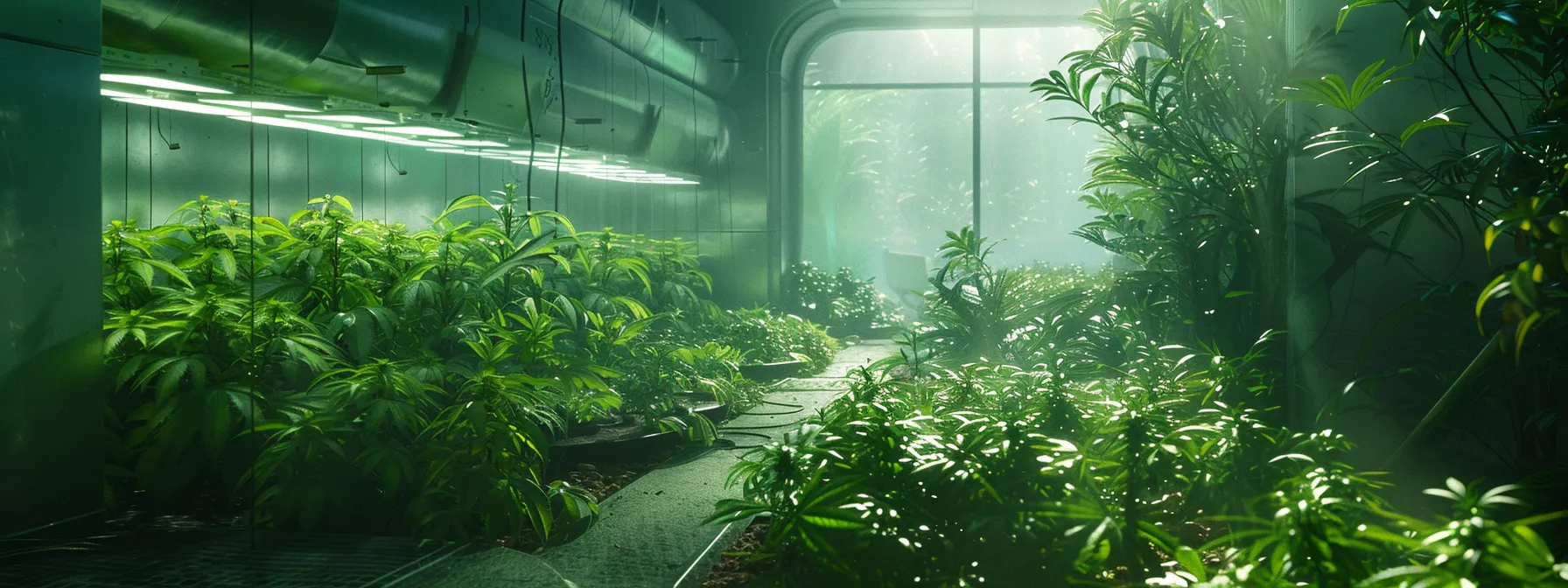
The section outlines essential elements for indoor cannabis growing, covering optimal lighting, precise ventilation, balanced nutrients, and controlled temperature and humidity. It highlights the role of proper lighting solutions in a room or garden setting, addresses cost efficiency and floor space planning, and discusses nutrients that impact the taste and overall health of the plants.
Selecting the Right Lighting Solutions
The choice for lighting in an indoor grow tent is critical to achieving optimal crop yields, whether using LED technology or fluorescent solutions. Practical growers assess the menu of light wavelengths to support nutrient absorption and maintain conditions comparable to a deep water culture system:
| Lighting Type | Benefit |
|---|---|
| LED | Efficient energy use with controlled spectrum and amber hue options |
| Fluorescent | Cost-effective, offering consistent output that promotes even crop development |
Lighting solutions should deliver a balanced spectrum that optimizes nutrient uptake and complements indoor growing conditions. Cultivators favor systems with adjustable settings, as they allow precise control over the environment to ensure a strong crop cycle, much like fine-tuning a deep water culture setup.
Importance of Ventilation Systems
The ventilation system plays a vital role in creating an environment that boosts the accessibility of information on indoor growing methods, ensuring that every herb receives adequate airflow for steady development. This stability allows growers to use instruments like a ph meter to measure nutrient levels and concentrate on improving plant health without disruptions.
Effective ventilation ensures that cultivators can receive timely updates on best practices by registering an email address for tips and advice. Professionals using cannabis grow tents rely on airflow systems to regulate temperatures and maintain conditions that foster robust herb growth while minimizing the risk of common indoor challenges.
Nutrients and Soil Requirements for Optimal Growth
Cultivators focus on nutrients and soil requirements as a cornerstone for optimizing indoor cannabis growth, much like caring for a houseplant in a greenhouse. They ensure that the soil prevents issues like root rot and supports strong germination by using proper nutrient-enriched mediums and reliable filtration measures during preparation:
| Component | Purpose |
|---|---|
| Nutrients | Support plant vigor and prevent deficiencies |
| Soil | Provide a stable medium that minimizes root rot |
| Filtration | Ensure clean water supply and balanced medium composition |
| Germination Support | Encourage rapid and healthy seed sprouting |
Expert growers acknowledge that selecting proper soil with balanced nutrients improves overall plant development and reduces the risks typical in confined spaces, such as inadequate filtration of moisture and contaminants. Practical methods include testing soil substrates and adjusting amendments regularly to meet the dynamic needs of indoor growth environments, preventing problems that arise during germination phases.
Monitoring and Maintaining Temperature and Humidity
Experts suggest that careful monitoring and adjustment of temperature play a central role in ensuring an efficient growing season. Precise instruments, often featuring a digital lens for accurate readings, require constant attention to maintain the balance needed for optimal plant health in indoor setups.
Maintaining humidity levels within the ideal range helps prevent the spread of mildew and protects delicate plant structures similar to the crisp quality of chard leaves. Cultivators observe environmental metrics diligently to identify any imbalances, thereby ensuring that indoor conditions remain consistently favorable throughout the growing season.
How to Set Up Your Cannabis Grow Tent Efficiently
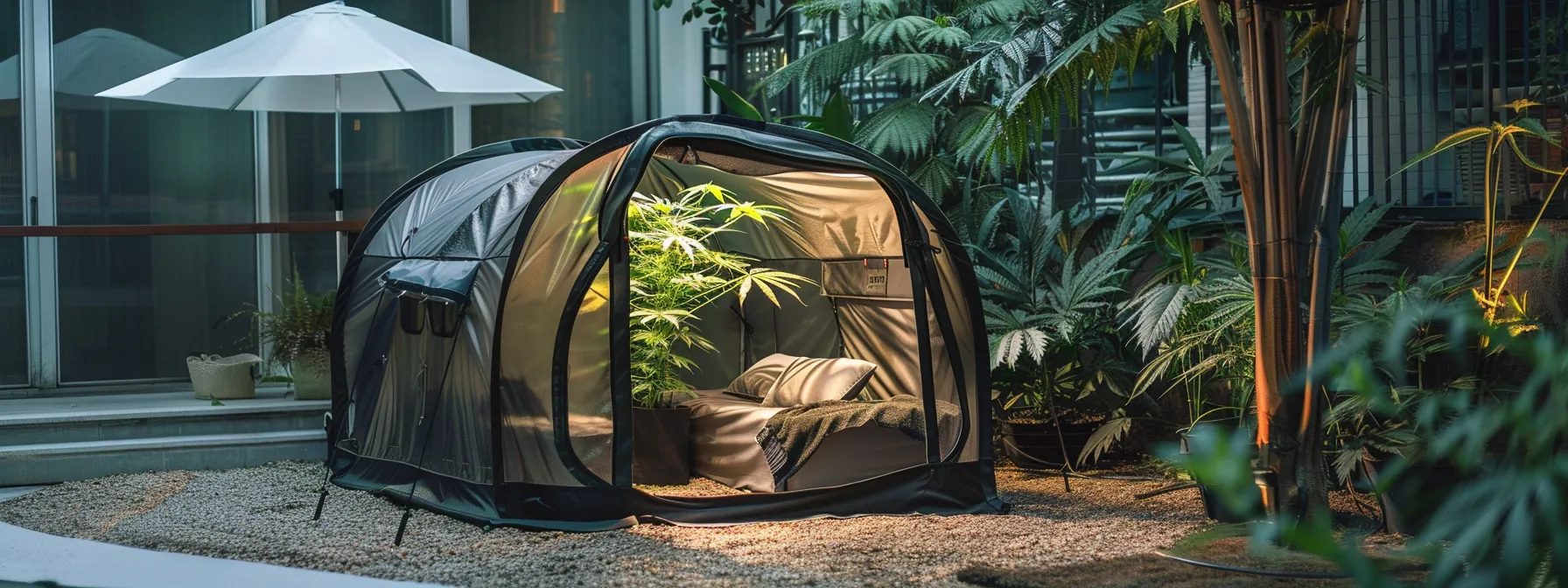
Efficient setup involves assembling the tent structure, arranging lighting and electrical equipment with sodium lights, and implementing proper ventilation techniques. Organized plant placement optimizes growth by incorporating micronutrient solutions and techniques like nutrient film technique. Careful use of pruning shears and adherence to a strict budget ensure practical benefits in indoor growing.
Assembling the Tent Structure
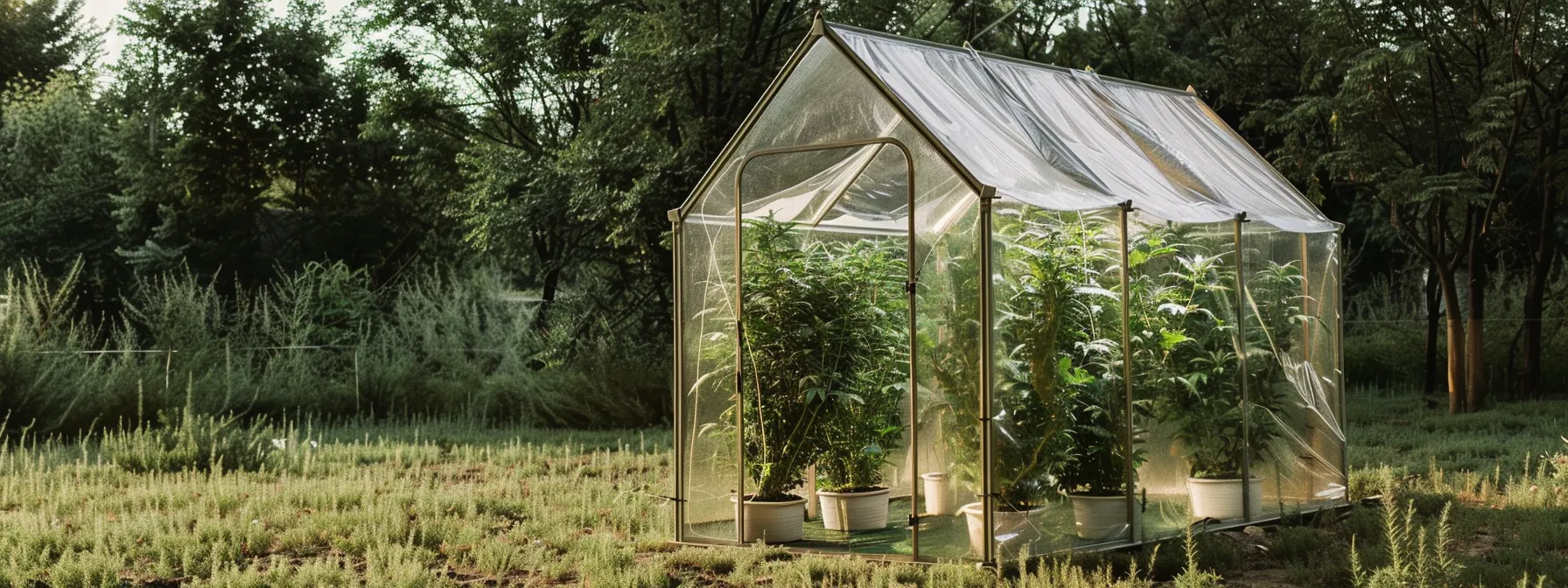
The assembly of the tent structure forms the backbone of an efficient growroom. Experts advise starting with a solid frame that can support essential equipment, while integrating mineral-based reinforcement helps enable a stable environment; this approach also aids in pest control by ensuring a secure enclosure free from external interference.
Practical experience shows that a well-assembled tent not only supports precise cultivation but also enhances overall indoor growing outcomes. A robust structure allows for easy installation of lighting and ventilation systems, and precise handling of components like sugar-based nutrient solutions, further contributing to a dependable setup that satisfies the needs of a dedicated growroom.
Arranging Lighting and Electrical Equipment
The setup of lighting and electrical equipment requires careful planning to ensure proper oscillation of light fixtures and efficient layout of the dehumidifier and duct components. Cultivators must adjust the placement of instruments to keep a steady eye on performance metrics and avoid future issues during indoor growing:
| Component | Purpose |
|---|---|
| Oscillation Module | Ensures even light distribution |
| Dehumidifier | Controls moisture within the tent |
| Duct System | Facilitates proper air circulation |
| Cultivator Tools | Support reliable equipment adjustments |
The arrangement of LED or fluorescent lights along with their electrical supports is vital for balancing temperature and humidity inside the tent. By ensuring that each device, from the dehumidifier to the duct system, operates optimally, cultivators improve overall efficiency and better address common indoor growing challenges.
Implementing Proper Ventilation Techniques
Implementing proper ventilation techniques in a grow tent involves carefully positioning the pump and ensuring that air flows smoothly across the entire reservoir area. Experts explain that knowing what is a grow tent means balancing mechanical components and using a bit of technical insight to support plant propagation while optimizing conditions for healthy growth.
Skilled cultivators adjust vents to maintain steady airflow that prevents overheating and moisture buildup in the grow tent. They rely on precise monitoring of the pump’s performance and reservoir temperatures to support efficient plant propagation and maintain an environment that encourages robust plant development.
Organizing Plant Placement for Growth Optimization
Cultivators arrange plant placement strategically to maximize light exposure on each seed, ensuring that every leaf receives sufficient illumination while minimizing shadows that affect resin development. The layout within the grow tent also promotes efficient carbon dioxide distribution, allowing the ventilator to operate effectively and supporting consistent growth patterns.
Expert growers frequently adjust spacing to minimize overcrowding and to improve airflow, ensuring that each plant obtains adequate room to mature. This arrangement helps maintain balanced nutrient distribution and supports effective resin production while the ventilator circulates carbon dioxide throughout the enclosed space for optimal growth conditions.
Common Mistakes to Avoid When Using a Grow Tent
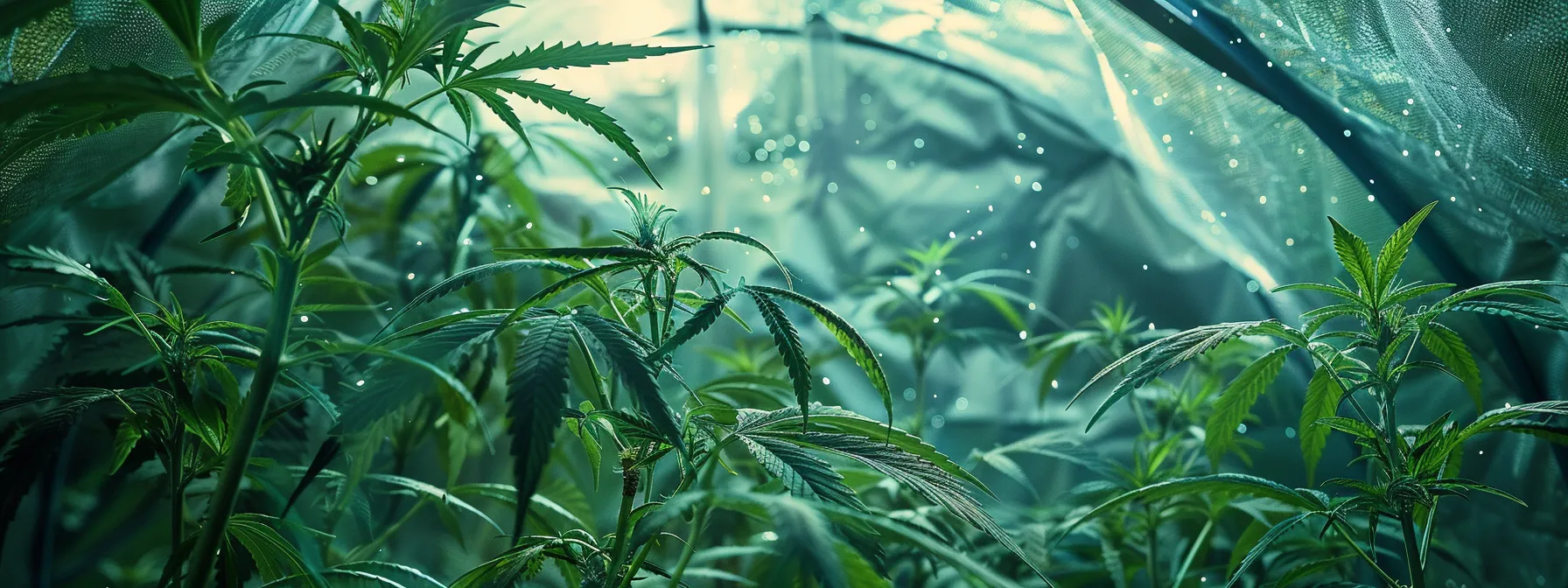
Overlooking ventilation needs can affect infrared performance, and ignoring light requirements may reduce effective horticulture practices. Failing to prepare soil and manage nutrients properly can lead to fungus issues and uneven plant height. Each error offers insights on how to avoid common pitfalls and improve overall indoor growing outcomes.
Overlooking Ventilation Needs
Overlooking ventilation needs in a cannabis grow tent can hinder successful indoor cultivation, impacting factors such as grow light efficiency and overall climate stability. Practical growers find that insufficient airflow during cloning or while using coir as a growing medium can lead to issues that affect plant development and cause stress on the growing system, much like a bone without support.
Neglecting proper ventilation disrupts temperature control and may compromise the benefits of using a grow light during critical phases such as cloning. Experienced cultivators emphasize that maintaining a stable climate with proper airflow prevents problems associated with nutrient absorption in coir and supports natural plant functions, ensuring a more robust indoor growing process.
Ignoring Light Requirements
The risk of ignoring proper light requirements in a cannabis grow tent can lead to significant issues with plant development, as specific watt requirements may not be met, resulting in a reduced yield for a particular strain. Growers should monitor light intensity and ensure that their lighting setup meets the environment's needs, as even minor discrepancies, such as misjudging measurements akin to paper quality or watt output, may affect plant performance.
Another concern is the failure to adjust the environmental factors like temperature measured in fahrenheit, combined with inconsistencies in nutrient uptake such as potassium, which can weaken a strain's overall vigor. Professionals find that tuning light levels to match the plants' needs prevents performance issues, ensuring a robust growth cycle and improved resistance to indoor stressors.
Skipping Soil and Nutrient Preparation
Skipping proper soil and nutrient preparation can result in suboptimal plant growth in a cannabis grow tent, as plants may not receive the balance of elements they require for robust development. Professionals note that neglecting these steps can lead to issues with soil weight distribution and heat buildup, much like an air conditioning system that fails to regulate temperature effectively.
Experienced growers emphasize that establishing a stable nutrient foundation is vital, as it supports the overall health of the crop similar to ensuring a cart is evenly loaded with a carrot's crisp quality in mind. Careful nutrient planning not only prevents imbalances but also avoids unnecessary stress on the system, reducing the risk of detrimental heat effects during cultivation.
Frequently Asked Questions About Cannabis Grow Tents
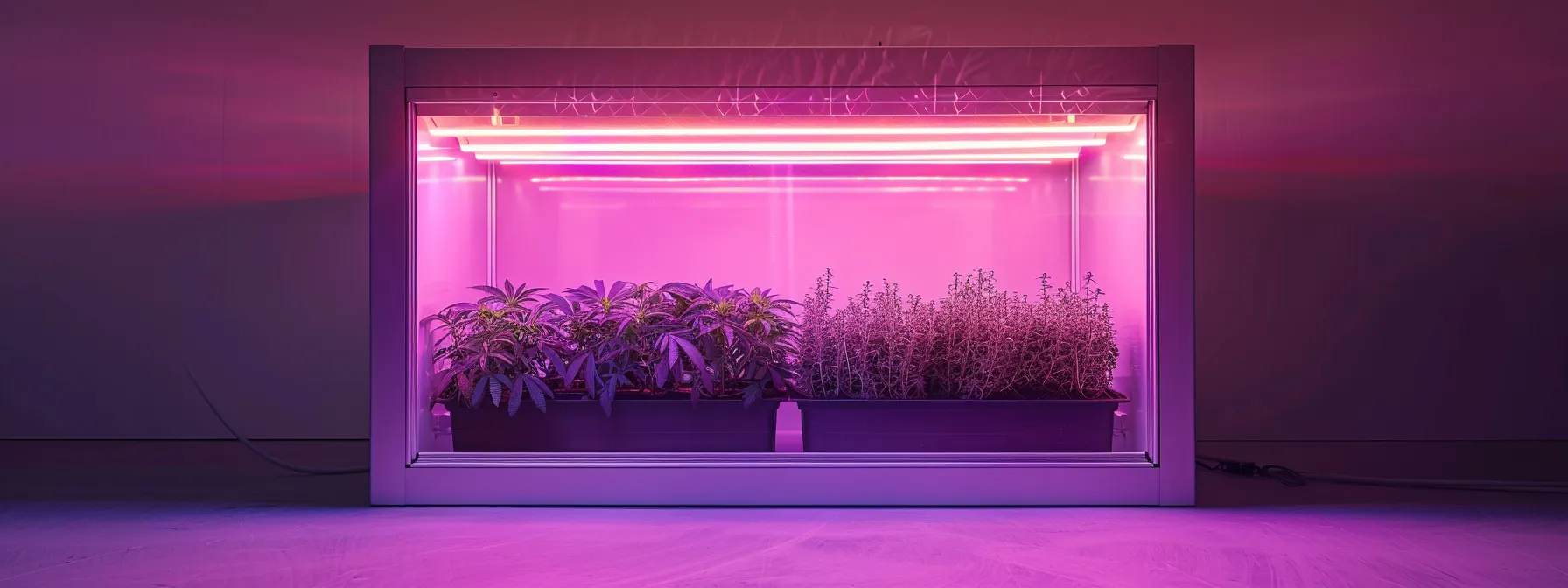
This section addresses common queries about grow tents, such as suitability for non-cannabis plants, optimal tent size, and beginner usability. It covers details on efficient construction, managing powdery mildew, ensuring proper energy intake, and nurturing a seedling during early growth stages. Practical insights guide consumers in choosing a system that fits their indoor growing needs.
Can I Use a Grow Tent for Other Plants?
The use of a grow tent is not limited to cannabis cultivation; professionals show that it serves well for various plant species that require controlled conditions for balanced plant development. A grow tent provides a secure environment where factors like water distribution and precise temperature control can be effectively managed using components such as a reliable zipper and advanced ventilation systems:
- Efficient space utilization for different plants
- Enhanced light distribution through reflective surfaces
- Consistent water supply to optimize hydration
- Availability of related information on the internet for setup and maintenance
- Seamless integration with a shopping cart for ordering essential accessories
Expert growers confirm that a grow tent can support a variety of plant species while ensuring optimal plant development through controlled amounts of water and other vital resources. Practical examples from indoor gardens illustrate that proper equipment, like adjustable zippers and connected online shopping resources, help streamline the process and improve overall results.
What Size Grow Tent Do I Need?
Determining the size of a grow tent requires evaluation of the available space and the number of plants intended for cultivation. Practical guidance from experienced cultivators suggests that selecting a tent with an expansive ecosystem inside, built using durable plastic material, helps prevent disease formation by ensuring a controlled setting where factors like temperature and humidity can be effectively managed, much like conditions compared on Mars.
Choosing the right tent dimensions also considers plant characteristics such as those of the coconut type, where sufficient room promotes robust growth while minimizing stress. Expert advice indicates that a spacious design allows for easier maintenance and monitoring, ensuring that plants remain healthy and properly spaced, which minimizes the risk of disease and supports a balanced system.
Are Grow Tents Suitable for Beginners?
The convenience and reliability of the Best Grow Tents for Cannabis make them an excellent choice for newcomers who approach indoor cultivation as a hobby. Beginners benefit from precise environmental control, protecting their plants against dust and ensuring proper organic matter management during growth.
Experts note that understanding plant genetics is crucial for successful cultivation in a grow tent, while practical guidance and clear instructions simplify setup for those with little experience:
- Easy assembly procedures
- Effective control of dust and organic matter
- User-friendly designs for hobbyists
New cultivators quickly realize that with the proper support and equipment, including well-reviewed Best Grow Tents for Cannabis, they can achieve stable indoor growth even when managing different genetics for optimal plant performance.
Comparing Top Grow Tent Brands and Models

This section reviews recommended brands known for quality and durability, discusses price ranges including budget-friendly options, and highlights user reviews and testimonials. The discussion covers factors such as odor control, bone meal use, and how units suit environments from garage to bedroom, while showcasing dependable light performance for indoor cannabis cultivation.
Recommended Brands for Quality and Durability
Top brands in the indoor cultivation market distinguish themselves through quality build and durable materials, as verified by the best marijuana guide's insights and user information that highlight reliable structures for consistent tomato growth and optimal sunlight exposure for fruit development:
- Quality construction and verified standards
- Durable materials designed for longevity
- Efficient environmental controls
- Clear information for easy setup and maintenance
Industry professionals recognize these brands for their dependable performance and attention to detail, ensuring that every grow tent provides precise environmental controls that support healthy tomato plants and maximize sunlight efficiency, reaffirming a commitment to offering robust indoor growing setups for all cultivators.
Price Ranges and Budget-Friendly Options
The market offers various options for indoor cannabis cultivation with grow tents available at diverse price ranges. Experts note that budget-friendly tents provide reliable equipment without compromising insect control, terpene retention, and overall efficiency; they also support nutrient absorption essential for healthy growth:
- Basic models with effective insect control
- Affordable systems maintaining terpene preservation
- Options focused on equipment efficiency and nutrient absorption
Cost-effective solutions help new cultivators start strong while also meeting the needs of seasoned growers who require dependable equipment. This approach ensures that every tent setup maintains efficient environmental conditions, promoting robust growth and balanced nutrient absorption for optimal indoor cultivation results.
User Reviews and Testimonials
User reviews indicate that growers appreciate tents equipped with robust gear, reliable water-resistant features, and integrated air purifier systems that minimize contaminants while boosting plant health with essential elements like phosphorus. These testimonials show that effective advertising of product benefits leads to increased trust among cultivators, who are eager to learn from real-life experiences when selecting the right indoor growing solution.
Feedback from experienced cultivators highlights that tents offering dependable waterproofing along with efficient ventilation systems and accurate nutrient support stand out from the competition. Their insights reinforce the value of quality gear, precise phosphorus application, and consistent performance, enabling users to achieve enhanced results in controlled indoor environments.
Resources and Further Reading on Indoor Cannabis Cultivation
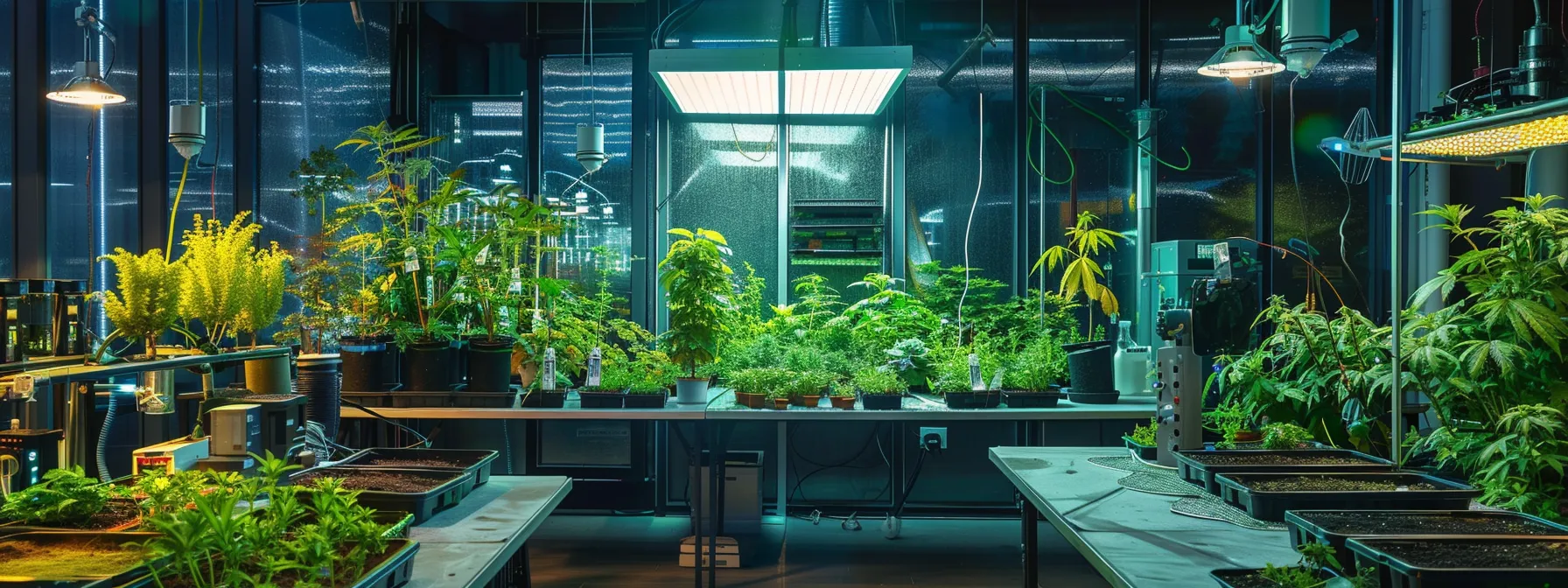
This section offers guides on hydroponics and soil growing, expert blogs, and online communities. It also covers recommended tools and accessories, such as a humidifier, water supply setups, and even insights on growing bell pepper and other vegetables. Customers will find practical advice and detailed resources to enhance their indoor cannabis cultivation experience.
Guides on Hydroponics and Soil Growing
Detailed guides on hydroponics and soil growing prove valuable for indoor cannabis cultivation by clearly outlining techniques that ensure optimal plant health. The experts advise using distilled water for nutrient solutions and incorporating perlite into the soil mix to maintain proper aeration, while discussions on seed bank quality provide a diamond-standard reference for growers seeking reliable genetic material.
These resources offer practical insights that help cultivators balance nutrient delivery and moisture control, making the process smoother and more effective. Real-world examples from experienced growers illustrate how adjustments in watering systems, such as using distilled water, can improve plant health, reinforcing the importance of techniques like perlite supplementation alongside solid seed bank practices.
Expert Blogs and Online Communities
Expert blogs and online communities offer valuable insights for growers seeking to reduce the learning curve associated with indoor setups. These platforms share actionable experiences on topics like transplanting and managing grow tent environments, which can improve return on investment by helping cultivators optimize every step of the process.
Professional communities also provide useful tips on inspection techniques using a loupe and strategies that even touch on aspects of cooking for terpene enhancement. Such resources equip growers with practical advice and expert observations, ensuring that their indoor cultivation methods stay effective and responsive to evolving challenges.
Recommended Tools and Accessories for Growers
Modern growers appreciate the use of essential tools and accessories that make indoor cultivation more effective. A quality hygrometer, together with drainage systems, ensures proper measurement of environmental conditions and water management, which supports cannabinoid production. The careful selection of equipment, such as instruments with accurate color indicators, simplifies the process of learning indoor cultivation techniques:
| Tool | Function |
|---|---|
| Hygrometer | Monitors humidity levels |
| Drainage Accessories | Ensure proper water flow |
| Color Indicators | Assist in quick assessments |
| Cannabinoid Testing Kits | Measure cannabinoid levels |
Specialized equipment provided by industry professionals benefits cultivators in their ongoing learning efforts and practical setups. Efficient use of accessories such as drainage enhancements and tools for cannabinoid measurement streamlines daily routines and addresses specific cultivation challenges with clear, actionable insights.
Frequently Asked Questions
What benefits do cannabis grow tents offer for indoor cultivation?
Cannabis grow tents offer controlled environments for indoor cultivation, enabling precise regulation of light, temperature, and humidity while reducing pest exposure and maximizing space efficiency.
How do grow tents improve plant growth indoors?
Grow tents improve plant growth indoors by establishing a controlled environment that optimizes light exposure, temperature, and humidity. This controlled setting promotes efficient resource use and superior yield quality for indoor cannabis cultivation.
Which components are necessary for successful indoor growing?
Successful indoor growing requires quality lighting, proper ventilation, a suitable growing medium or hydroponic system, precise temperature control, and accurate humidity management to deliver optimal conditions for cannabis plants.
How can one correctly set up a cannabis grow tent?
Place your cannabis grow tent in a secure, ventilated spot. Install adequate lighting, proper airflow systems, and control tools for temperature and humidity, ensuring the system supports efficient indoor growth.
What errors should be avoided when using grow tents?
Errors to avoid when using grow tents include improper ventilation, excess moisture, and poor light distribution. Incorrect cleaning practices and neglecting equipment checks may also reduce plant performance and overall yield quality.
Conclusion
Cannabis grow tents provide a structured and controlled environment that supports optimal cannabis cultivation. They offer precise environmental regulation by integrating features such as adjustable vents, filtration systems, and robust lighting options. These tents maximize indoor space and reduce the risk of pests and contaminants through efficient design and advanced technology. Cultivators can achieve consistent growth and improved plant health by using an indoor setup that meets modern standards for precise nutrient and climate control.


